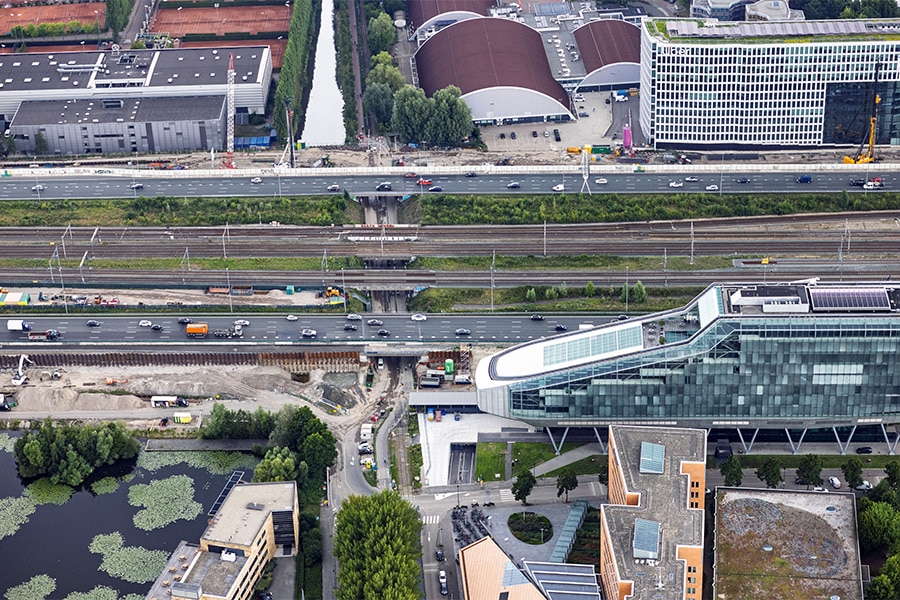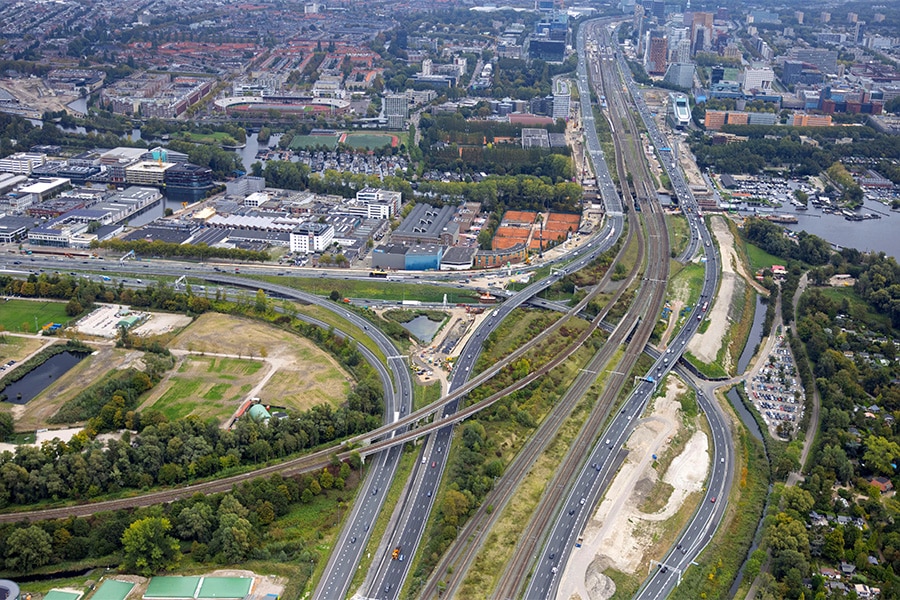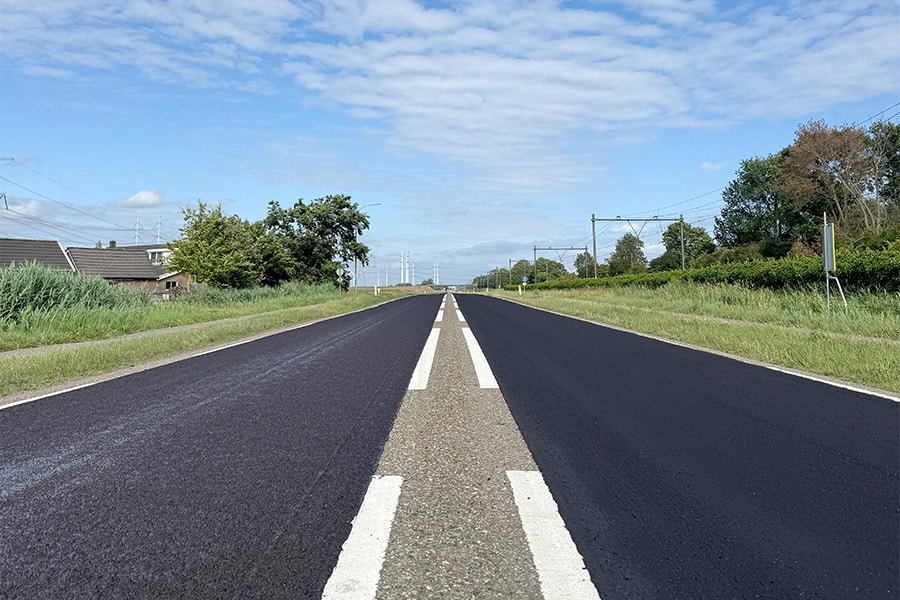
Widening Schiphol Bridge: precision drilling between parabolic tension reinforcement
On behalf of Rijkswaterstaat, construction consortium VeenIX is widening the A9 between Badhoevedorp and Holendrecht. The route includes several engineering structures, including the Schiphol Bridge, which is being widened on both sides. To anchor the new sections to the existing structure, anchors up to 180 centimeters deep are being drilled into the existing structure, right along the parabolic tension reinforcement. For this, VeenIX relies on the globally unique concept of Interboor Midsland and TerraCarta.
Interboor Midsland and TerraCarta have been working together for five years to solve the bulb plate floor problem. "You probably remember the collapse of the parking garage at Eindhoven Airport," begins Onno Dikkerboom, director and owner of Interboor Midsland. "Together with TerraCarta, we developed a technique to detect the existing reinforcement in the floors in order to then drill new anchors in a very targeted manner. It's a tailor-made solution that allows us to reinforce floors very discreetly. And so we have already jointly carried out many projects, including the floors of the JuBi Towers on the Turfmarkt in The Hague (the huge building of the Ministry of Economic Affairs, ed.) which were reinforced with 50,000 anchors."

High-quality scanning techniques
In widening the Schiphol Bridge, VeenIX faces essentially the same challenge as with the bulb plate floors. "Here, too, there is existing reinforcement that is logically not visible from the outside and whose exact location is not specifically indicated on drawings," says Karel Meinen, CEO of TerraCarta. "Our job is to map the prestressing steel with high accuracy so that our colleagues at Interboor Midsland can drill the anchors safely and responsibly. Using measuring antennas, we look right through the concrete like a kind of X-ray. Through our method, we can detect the fine-grained reinforcement and get a nice picture of the main reinforcement. And so, using a 3D wire model, we visualize what is happening in the bridge."
Sinusoidal reinforcement
Locating the tension reinforcement and drilling the anchors seems like a piece of cake, but it is anything but, assures Onno. "It's an advanced concept that we've continued to develop over the past five years and is unique in the world. It doesn't happen anywhere else yet. We have therefore collectively built a lead of more than five years over our competition. No other drilling company dared to burn its fingers on drilling the anchors in the Schiphol Bridge. Here we are dealing with a parabolic tension reinforcement running through the viaduct in a sinusoidal shape. Big advantage of this is that less concrete is needed to make a gigantic and strong bridge. If you want to renovate or widen such a structure, as here in the A9, it is crucial to map the exact location of the reinforcement. Because should you hit the reinforcement while drilling, you may just decapitate six cows 200 meters away. So it's life-threatening and if something goes wrong, it runs into quite a bit of money to repair it again."

Combination of measurement techniques
So there is everything to ensure that the reinforcement in Schiphol Bridge is mapped as accurately as possible. "The combination of measurement techniques determines the certainty of what you are mapping," Karel continues. "After all, you want to be able to check things. We also measured both at the top and bottom to calculate based on possible margins of error. And so we weigh numerous things against each other to make a judgment about with what accuracy and at what effort we can map the reinforcement. Because the more certainty, the more effort it takes. That's what we do: pursue the highest possible level of certainty. In addition, the bore that is set also still has a certain tolerance."
Precision Drilling Technology
The 3D wire model supplied by TerraCarta and Interboor Midsland is superimposed over the new boreholes for clash detection. "That way we indicate which bore, for example, has to be moved 5 or 10 centimeters, so that the existing reinforcement is not touched," says Karel. Onno adds: "In the 'field,' a team of scanning and drilling specialists work together to drill and glue the anchors into the structure with great accuracy right alongside the existing reinforcement. And that's very precise, because if you are off by 1 degree at the front, you really have a problem at 180 centimeters depth. Thanks to our 360-degree approach methodology and precision drilling technology plus some additional developments (the blacksmith's secret, ed.) we dare to guarantee with almost 100% certainty that we won't touch the existing reinforcement."

Meanwhile, Interboor Midsland has already successfully drilled several thousand cuttings in the Schiphol Bridge without weakening the existing structure. Onno foresees a huge potential for this technique in infrastructure. "The potential for strengthening the structural safety of structures and objects is enormous. Also abroad, where a collapsed bridge or viaduct regularly makes the news." To be continued, no doubt!




